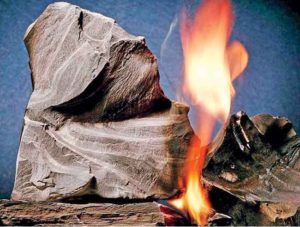 The gas price at Waha registered a low last Thursday of minus $2.50 per million British Thermal Units and closed at minus $1.95, its lowest level since S&P Global Platts started collecting the data back in 1994. The steep negative prices last week were in part caused by equipment failures on one pipeline system and planned maintenance on another, which made it harder to find outlets for unwanted gas. The fundamental problem in west Texas, however, is that there is a growing oversupply of gas that is a byproduct of booming crude output in the shale oilfields of the Permian Basin. That surge of surplus gas, which could continue for years, is expected to have global implications, with several companies developing projects for exporting it to world markets. Since the start of 2016, oil production in the Permian region of Texas and New Mexico has risen by about 120 per cent, more than doubling as the rebound in crude prices encouraged a new shale development boom. But the reserves also hold large volumes of natural gas, which is extracted along with the crude. The region’s gas production has also soared by 120 per cent over the same period. As that gas boom has shadowed oil production, it has started to strain the capacity of the pipeline network to take the gas to market. Regulations and safety considerations mean that companies with excess gas cannot simply vent it into the air or burn it all off in flares, which means they are compelled to find takers for it. Financial Times
The gas price at Waha registered a low last Thursday of minus $2.50 per million British Thermal Units and closed at minus $1.95, its lowest level since S&P Global Platts started collecting the data back in 1994. The steep negative prices last week were in part caused by equipment failures on one pipeline system and planned maintenance on another, which made it harder to find outlets for unwanted gas. The fundamental problem in west Texas, however, is that there is a growing oversupply of gas that is a byproduct of booming crude output in the shale oilfields of the Permian Basin. That surge of surplus gas, which could continue for years, is expected to have global implications, with several companies developing projects for exporting it to world markets. Since the start of 2016, oil production in the Permian region of Texas and New Mexico has risen by about 120 per cent, more than doubling as the rebound in crude prices encouraged a new shale development boom. But the reserves also hold large volumes of natural gas, which is extracted along with the crude. The region’s gas production has also soared by 120 per cent over the same period. As that gas boom has shadowed oil production, it has started to strain the capacity of the pipeline network to take the gas to market. Regulations and safety considerations mean that companies with excess gas cannot simply vent it into the air or burn it all off in flares, which means they are compelled to find takers for it. Financial Times
